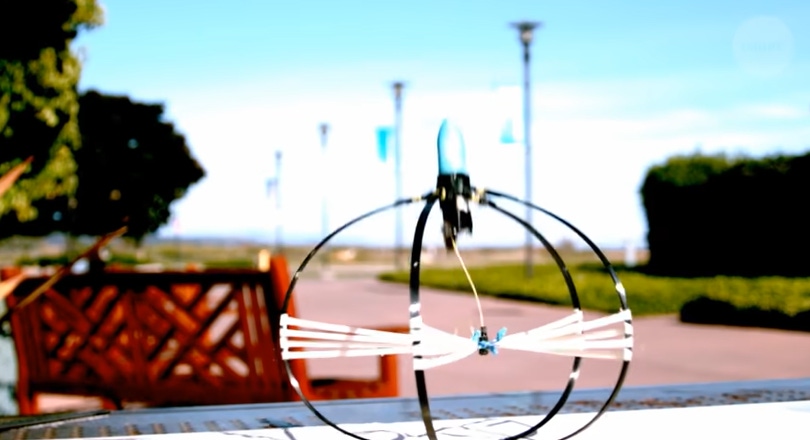Capable of leaping higher than any human or machine, the new design is pitched for use in space exploration

Researchers from the Hawkes Lab at UC Santa Barbara have developed a robot based on the jumping capabilities of animals such as grasshoppers and frogs, with the new bot jumping a record-breaking 100 feet into the air.
Their research was published in the journal “Nature.”
“The motivation came from a scientific question,” lead author Elliot W. Hawkes, a mechanical engineer at the university, said. “We wanted to understand what the limits were on engineered jumpers.”
The jumping robot’s design is based on a mechanical feature called “work multiplication,” whereby a motor is harnessed alongside springs made of carbon fiber strips, with the result working much like an archer’s bow. As the motor winds the strips in, they become compressed and allow for a more powerful leap – with the bot’s spring-to-motor ratio nearly 100x greater than that found in animals.
The university’s model is believed to have reached the optimum performance possible for the materials used, capable of accelerating from 0 to 60 mph in nine milliseconds and exerting an acceleration force of 315 grams.
It is hoped that the robot could be used in space exploration, being capable of moving across uneven terrain faster than a robot that rolls or walks – particularly on planets or moons with lower gravity than Earth – and gathering both aerial and terrestrial information in the process.
“We calculated that the device should be able to clear 125 meters in height while jumping half of a kilometer forward on the moon,” said Hawkes. “That would be one giant leap for engineered jumpers.”
The light weight design would offer a more streamlined and less cumbersome option to existing space exploration devices, such as the Ingenuity probe which relies on a helicopter system that faces challenges in landing and taking off softly.
About the Author(s)
You May Also Like





.png?width=300&auto=webp&quality=80&disable=upscale)


.png?width=300&auto=webp&quality=80&disable=upscale)